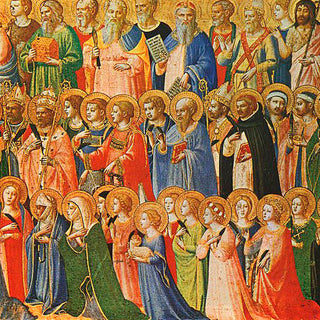The transition from paganism to Christianity happened mainly through assimilation of ancient pagan rituals by the new monotheistic belief. An example of this pattern is the All Saints’ Day, that succeeded in transforming a Celtic popular tradition in a prelude to a great Christian celebration. Celts used to celebrate the Death of the Year on the night between Oct. 31 and Nov. 1, marking the end of fertile months. Learn below how this festivity adapted to Christianism.
All Saints' Day: The Chronology
The very first trace of a celebration of this kind was found in Antioch and it presumably dates back to the 4th century. In the 6th century, Pope Boniface IV consecrated the Pantheon — the Roman temple of all gods — marking it the Basilica of Saint Maria ad Martyres, and set 13 may as the day of commemoration of martyrs. A century later, Gregory III took a step further by dedicating one of St. Peter’s Basilica chapels to all martyrs, apostles, and confessors. The feast of All Saints as we know it today was finally established in 835 by Louis the Pious in France under the Papacy of Gregory IV.

Basilica of Sancta Maria ad Martyres - otherwise known as Pantheon
The Ivy League of Christian Festivities
Similarly to Christmas and Easter, All Saints' Day is considered to be a first rank festivity. It is in fact celebrated both with a vigil and an octave. The latter was introduced by Pope Urban IV, who maintained that this solemnity was instituted in order “to supply any deficiencies in the faithful's celebration of saints' feasts during the year.”
Three in One
It is part of a three-day cycle that includes Halloween (October 31), All Saints’ Day itself (November 1), and All Souls’ Day (November 2). Even if Halloween is commonly considered a nonreligious festival because of its pagan origins, the name itself indicates the connection with Christianity. Halloween, in fact, is none other than the contraction of “All Hallows Eve”, in other words, the eve of the Christian festivity of All Saints.
On All Saints' Day, celebrate your Patron Saint with one of our blessed religious medals from the Vatican.
Related articles:
All Saints' Day: The Meaning According to Pope Francis→
All Souls' Day: Prayer for Souls in Purgatory→












